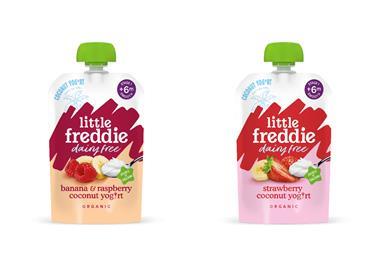
With so much investor focus on anti-obesity medicines (GLP-1), it might be easy to overlook rising concerns about ultra-processed foods (UPFs).
It is arguably a bigger issue than GLP-1 for food manufacturers and food ingredients companies. Debate around UPFs has been around for a while, but a number of scientific studies on their health risks this year have ratcheted up consumer awareness. That has resulted in a 60% increase in UPFs as a Google search term over the past year.
In August 2023, two new studies were presented at the European Society of Cardiology in Amsterdam, linking greater UPF consumption with increased risk of high blood pressure, heart disease and strokes.
High blood pressure 39% more likely
Separately, a University of Sydney research paper, which tracked 10,000 women for 15 years, found that those with the highest proportion of UPFs in their diet were 39% more likely to develop high blood pressure than those with the lowest, even adjusting for the effect of salt, sugar and fat. This pointed to the impact of processing and additives.
However, one of the most comprehensive studies – of 200,000 UK adults over a 10-year period – was carried out by Imperial College. The study found that each 10% increase in UPF consumption was associated with a 6% increase in cancer mortality, alongside a 16% increase for breast cancer and a 30% increase for ovarian cancer.
Henry Dimbleby, the UK government’s former food tsar, said these studies should be a wake-up call for the industry, and if there is something inherent in the processing of foods that is harmful, then it’s a disaster.
However, there are some dissenting voices on this subject. Professor Janet Cade, head of nutritional epidemiology at the University of Leeds, has argued the causal link between UPF consumption and poor health outcomes could be related to the poor nutritional quality of UPFs rather than the degree of processing. The UK Scientific Advisory Committee on Nutrition said in July there could also be limitations to the Nova UPF classification system.
What is not in question is that the prevalence of UPFs is on the rise. They account for 56% of all UK calories consumed – the second-highest in the world, behind only the US at 57%. In stark contrast, UPFs represent only 18% of Italian diets. Is it any wonder the life expectancy of Italians is higher than in the UK, and with a much lower obesity rate?
One factor boosting the growth of UPFs is their relative affordability compared to products without these additives. In a worrying sign, Defra says UK vegetable sales have fallen to their lowest level in 50 years due to the cost of living crisis.
Right now, there is no obvious regulatory catalyst to stem the growth of UPFs. The focus is still on fat, sugar and salt, as shown by the HFSS regulation in the UK. However, the British Medical Journal in October proposed mandatory front-of-pack labelling systems as a potential solution to improve public health, highlighting the potentially addictive nature of UPFs.
Obesity epidemics
In some developing markets such as Latin America, where obesity is at epidemic levels, there seems more regulatory urgency. For example, Argentina enforced a law in 2022 that requires UPFs to display an octagonal black label occupying at least 5% of packaging. Other Latin American countries are investigating whether to follow suit.
If there is a shift to unprocessed and minimally processed foods such as fruit and vegetables, meat and fish and fresh dairy, this could be an issue for ingredients suppliers. The vast majority of the ingredient additives they provide – e.g. sweeteners, emulsifiers, texturants and flavours – are simply not required in whole and minimally processed food.
However, there could be a shift by manufacturers to cultures and enzymes that can maintain the integrity of the food product without chemicals. For example, Nestlé has recently adopted an enzymatic process to reduce intrinsic sugar in ingredients such as malt, milk, and fruit juices by up to 30%, without requiring any added sweeteners.
It is also one of the first food companies to start nutritional profiling of its portfolio against the Health Star Rating (HSR) system. It has set an explicit target to increase its healthy food revenues by CHF20-25bn by 2030, representing 50% growth vs its 2022 baseline.
This issue isn’t going away, even if UPF consumption in the short term is going up. For listed food and food ingredients companies, there is the potential ESG-focused investors will increasingly screen against UPF exposure as a risk. Against this backdrop, food CEOs will need to think hard about what ‘good’ portfolios of the future should look like.



















No comments yet